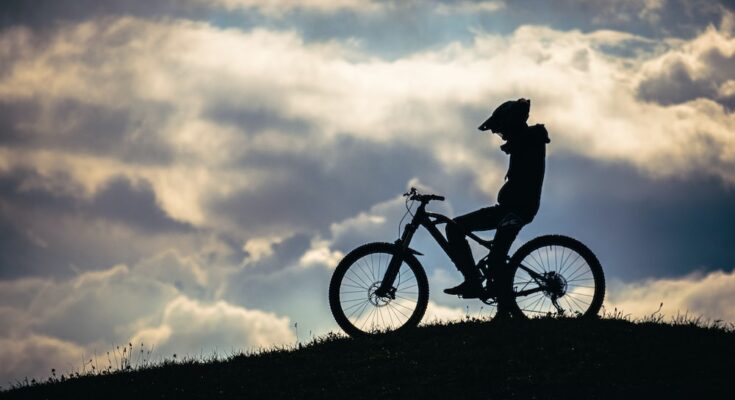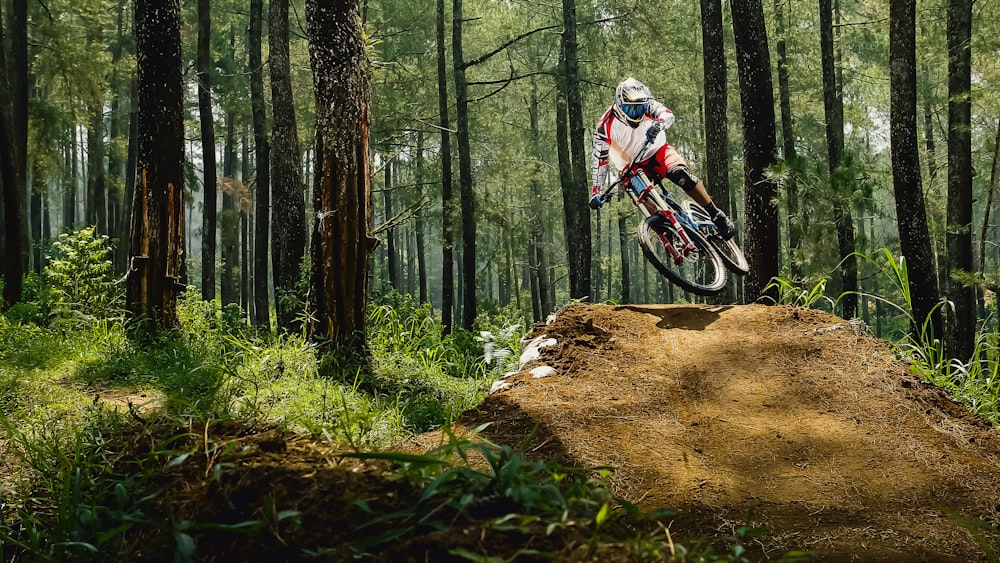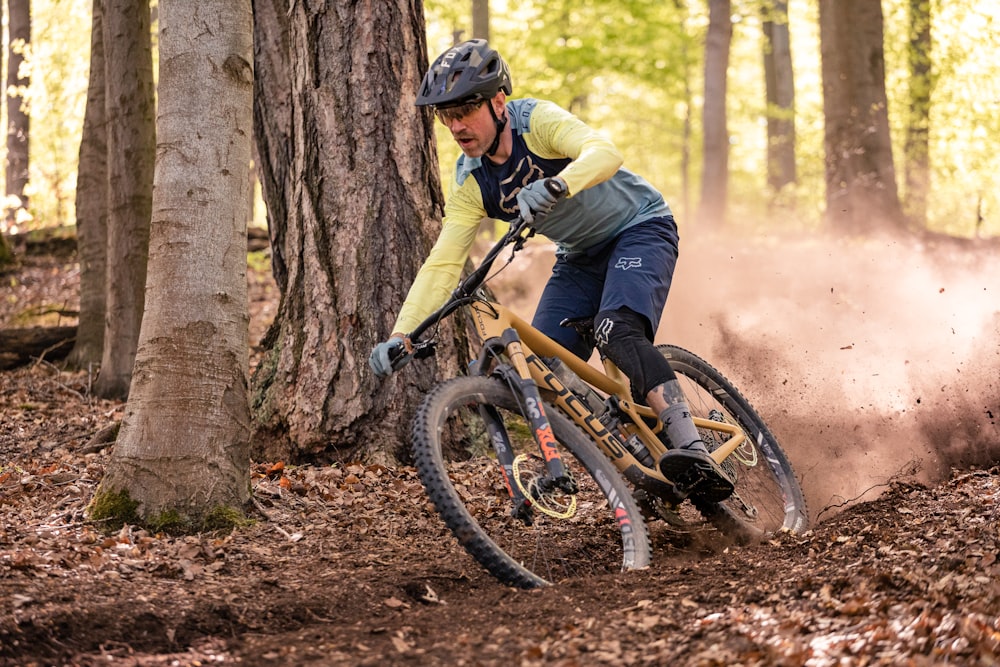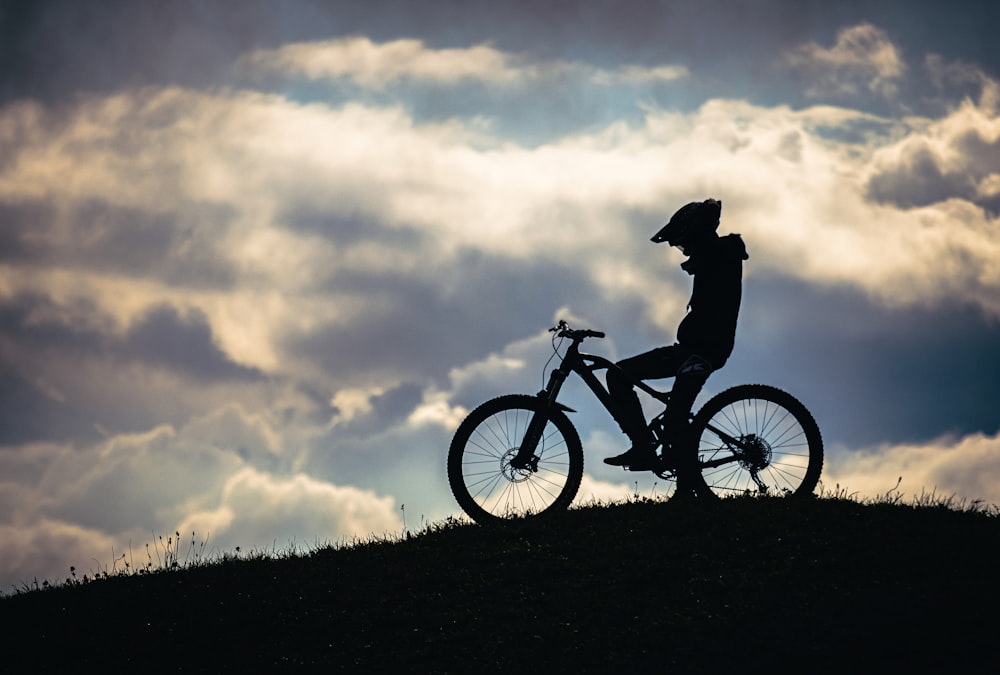Mountain Biking Safety Guide for Beginners
Are you considering hiking the trails? There are several mountain biking safety considerations you should be aware of before getting set up and heading out.
It’s exciting to ride downhill at high speeds and launch over drops, but maintaining control of your bike is crucial. Without the proper tools and a careful evaluation of the risks, you can find yourself in trouble.
You can discover all the mountain biking safety advice you need here to have a safe ride and avoid any accidents.
Helmet is necessary for mountain biking
Image via Unsplash.com
Wearing a helmet is one of the simplest yet crucial safety advice for mountain riding.
Although they might not be the most physically pleasant safety gear, it has been discovered that they about 80% lessen major head injuries.
Because of the nature of this activity, it’s necessary to protect your head if you fall or crash because it’s likely that you will underestimate twists, bumps, and other hazards. It’s crucial to lower the risk of major trauma to the brain because brain injuries can be deadly or drastically alter one’s quality of life.
Ensure that your helmet provides the highest level of safety.
Having the right gear for mountain biking
Image via Unsplash.com
In addition to your helmet, you should make sure that the other equipment you choose for usage on the trails prioritizes comfort and safety.
To begin with, your riding attire should be suitable for mountain biking. If you’re transferring terrains, you’ll need to adjust your road riding equipment because there are a few obvious changes that call for different gear.
Here is a list of everything you will require:
- Glasses/Gloves for a Helmet
- Jersey
- water-resistant, breathable jacket
- Mountain bicycle shorts with padding for the first layer of clothing
- Second pair of loose-fitting, cargo-style shorts
- In damp conditions, waterproof trousers should be used instead of a second pair of shorts.
- elbow and knee pads
- (Optional but increases safety) Body armor
- gloves with all fingers
- Water-resistant socks
- shoes for mountain bikes
If you’re new to off-road cycling, body armor could seem a bit excessive, but depending on the tracks you’ll be riding on, it might be essential for defending susceptible portions of your body.
Carrying first aid kit
Image via Unsplash.com
Always carrying a first aid kit while mountain biking is one of our top safety recommendations.
Most likely, you’ll run into roadblocks along the way, such exposed tree roots or jagged pebbles, which can inflict serious injuries.
A first aid bag can help you patch yourself up until you can obtain more medical attention, whether you catch your leg on a bramble or shatter your collarbone (one of the most frequent cycling accidents).
You should buy a pack that has everything you need for basic first aid, like:
- Plasters, bandages, scissors, and medical tape
- latex mitts
- medication for pain, tweezers, and eyewash
If you’re unfortunate enough to hurt your collarbone and require a temporary sling, it’s a good idea to keep a triangular bandage with you. Another tool that bikers might use is a foil blanket, especially if they suffer an accident when it’s chilly outside.
Energy and hydration
You should refuel before leaving so that you can maintain your energy levels while riding.
One of our top safety recommendations for mountain biking is to have a high-carbohydrate meal beforehand because it will keep you energetic for a longer period of time.
Want to keep your energy levels up during your ride? Reaching for energy gels is never a terrible idea because they are a quick-acting, easily absorbed source of energy. Another common mid-ride snack is a banana, but make sure to keep them in the top of your backpack.
Another important safety advice for mountain biking is to stay hydrated, especially since it’s doubtful that you’ll be able to stop into a store if you forget your water bottle.
Always remember your water bottle or energy drink, and make sure you drink enough in the hours before your bike.
It’s also a good idea to look at cyclists’ recovery meals, as eating to recover is just as crucial as fueling up before a ride.
Don’t rush while mountain bikes
Image via Unsplash.com
It can be tempting to push yourself to achieve that next goal when honing your mountain bike skills. However, due to the possibility of injury in this sport, it’s crucial to pace yourself.
One of the most crucial mountain biking safety precautions is to take your time and make sure you keep control of your bike.
Focus on improving your ability to spot and avoid dangers while keeping a constant speed and a safe stopping distance. As a mountain biker, this is one of the most crucial skills you’ll learn, so being patient is essential as you advance.
One of our top off-road cycling safety recommendations is to stick to trails that are appropriate for your skill level and move gently.
The most hazardous risks on the route are corners, thus it is essential to know how to avoid them, especially when they are blind. To lessen your blind zone, you should constantly slow down as you approach a turn and ride on the outside.
Mistakes are inevitable
Image via Unsplash.com
When mountain riding, you will inevitably crash or fall off your bike. Sadly, this is only a small portion of the action.
However, there are a few mountain biking safety recommendations you may abide by to prevent suffering a catastrophic injury and the associated high medical expenses.
First off, it’s a good idea to get mountain bike insurance to protect both you and your bike in case something goes wrong. If you hurt yourself, another rider, or your bike, you’ll know you’re protected.
Second, it’s important to be conscious of your surroundings and the dangers of riding along particular stretches of the track. Consider your ride as a running risk analysis.
You should keep the following in mind to prevent serious incidents:
- the environment, your pace
- your knowledge of other cyclists
You may improve your mountain bike experience by following these safety recommendations. You’ll make sure you don’t go too far from your comfort zone.
USEFUL LINKS:
Click here to know more about mountain biking
Skydiving equipment for your safety and fun ride










One Comment on “Mountain Biking Safety Guide for Beginners ”